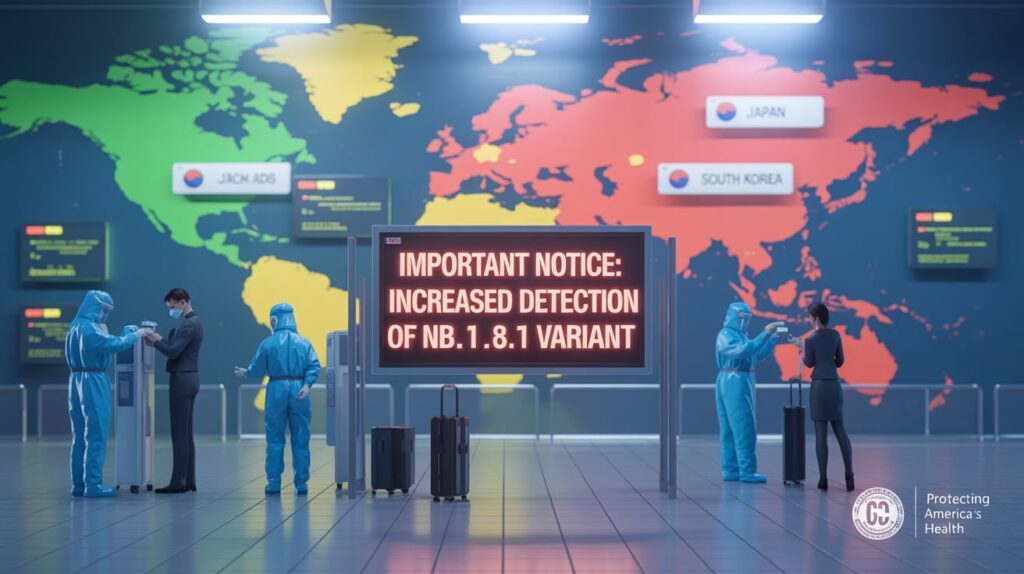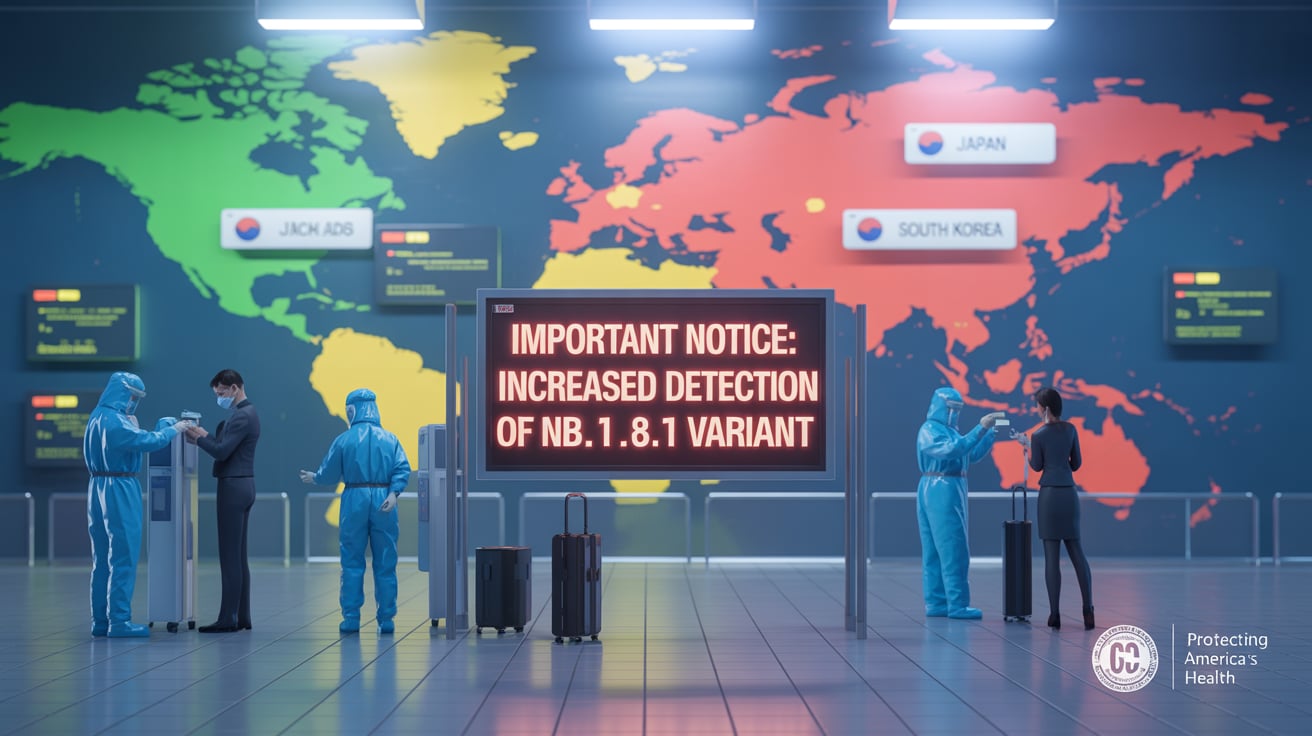Preliminary studies indicate that NB.1.8.1—a subvariant of the JN.1 lineage—may be more transmissible than other COVID-19 variants.

Washington:
Several cases of the new COVID-19 variant, NB.1.8.1—linked to a significant surge in infections in China—have been identified at U.S. airports, according to the Centers for Disease Control and Prevention (CDC). The variant was detected through the CDC’s airport surveillance program in international travelers arriving at airports in Washington state, California, the New York City area, and Virginia, CBS News reported.
Data from the Global Initiative on Sharing All Influenza Data (GISAID) indicates that most of these cases originated from travelers arriving from countries such as Japan, South Korea, France, China, and others. The testing took place between April 22 and May 12.
In addition to the airport detections, NB.1.8.1 cases have also been reported in several other U.S. states, including Ohio, Rhode Island, and Hawaii. These cases are considered separate from those identified through airport screening.
U.S. health officials are now closely monitoring the NB.1.8.1 variant, which has become dominant in China and is spreading in parts of Asia, including Hong Kong, where COVID-19 cases have surged to their highest levels in over a year.
Early Studies Suggest NB.1.8.1 Spreads Easily, but Severity Appears Low
Preliminary research indicates that NB.1.8.1—a subvariant within the JN.1 group—may spread more easily than other COVID-19 variants. However, it does not appear to cause severe illness, and several existing vaccines are already effective against it.

Cases Remain Low in the U.S.
“The CDC is aware of reported cases of the NB.1.8.1 COVID-19 variant in China and is in ongoing communication with international partners,” a spokesperson for the Centers for Disease Control and Prevention (CDC) said in a statement.
In a separate comment to Fox News Digital, the CDC noted that fewer than 20 sequences of NB.1.8.1 have been detected in the U.S. through baseline surveillance. As a result, the variant has not yet met the criteria to be featured on the CDC’s COVID Data Tracker.
“We monitor all SARS-CoV-2 sequences, and if this variant begins to rise in proportion, it will be added to the Data Tracker,” the spokesperson added.

NB.1.8.1 Variant Spreads Easily, But Severity and U.S. Cases Remain Low
Early research suggests that NB.1.8.1, a subvariant within the JN.1 group of COVID-19 variants, may be more transmissible than others. However, it does not appear to cause severe illness, and current vaccines are believed to offer effective protection against it.
U.S. Case Numbers Are Low
The Centers for Disease Control and Prevention (CDC) has acknowledged reports of NB.1.8.1 infections in China and is maintaining regular communication with international health agencies. In a statement, a CDC spokesperson confirmed that fewer than 20 cases of the variant have been identified in the U.S. through routine surveillance. As such, NB.1.8.1 has not yet been added to the CDC’s official COVID Data Tracker.
“We monitor all SARS-CoV-2 variants, and if NB.1.8.1 increases in frequency, it will be included in our dashboard,” the spokesperson said in a separate statement to Fox News Digital.
XFC Variant Gaining Attention
In addition to NB.1.8.1, U.S. health officials are monitoring the rise of another variant, XFC, which is seeing increased activity across the country. While the nation has experienced a generally predictable pattern of COVID-19 surges—typically one in the summer and another in winter—the virus’s continued evolution remains a concern.

COVID-19 Deaths Still Significant Despite Fewer Infections
Although COVID-19 infection rates are trending downward, the virus continues to cause an average of 350 deaths per week in the United States, according to the CDC. This figure is significantly lower than the peak of nearly 26,000 deaths in early January 2021, but still reflects the ongoing impact of the virus.
Experts point to factors such as low vaccine uptake, declining immunity over time, and limited use of treatments as key reasons for the persistent death toll.
XFC Variant Also Under Watch
U.S. health authorities are also keeping a close eye on another emerging variant, known as XFC, which is showing significant growth domestically. Officials caution that while COVID-19 patterns in the U.S. have generally settled into two predictable waves—one in summer and another in winter—the virus continues to evolve in unexpected ways.
COVID-19 Deaths Remain High Despite Declining Cases
According to CDC data, COVID-19 is still claiming an average of 350 American lives each week. While this number is far lower than the pandemic’s peak—25,974 deaths in the week ending January 9, 2021—it remains a cause for concern.
Experts attribute the ongoing toll to factors such as low vaccination rates, waning immunity, and limited access to antiviral treatments. Nonetheless, overall infection rates in the U.S. are currently declining.
Conclusion:
The emergence of the NB.1.8.1 COVID-19 variant, linked to a surge in cases abroad, has prompted increased surveillance by U.S. health authorities, though current case numbers in the country remain low. While early studies suggest this variant may spread more easily, it does not appear to cause severe illness, and existing vaccines offer protection. At the same time, the rise of other variants like XFC and the continued toll of COVID-related deaths underscore the importance of sustained vigilance, vaccination efforts, and timely access to treatment as the virus continues to evolve.




3 thoughts on “U.S. Reports Cases of New COVID-19 Variant NB.1.8.1 Tied to Surge in China”